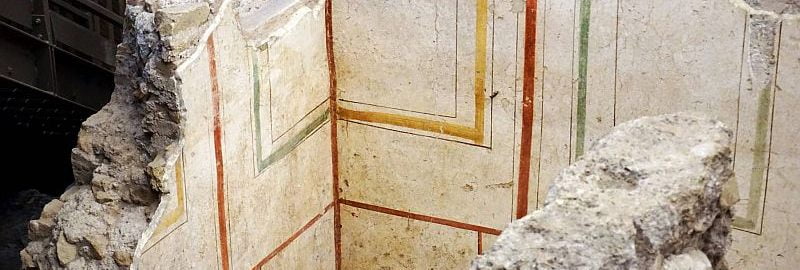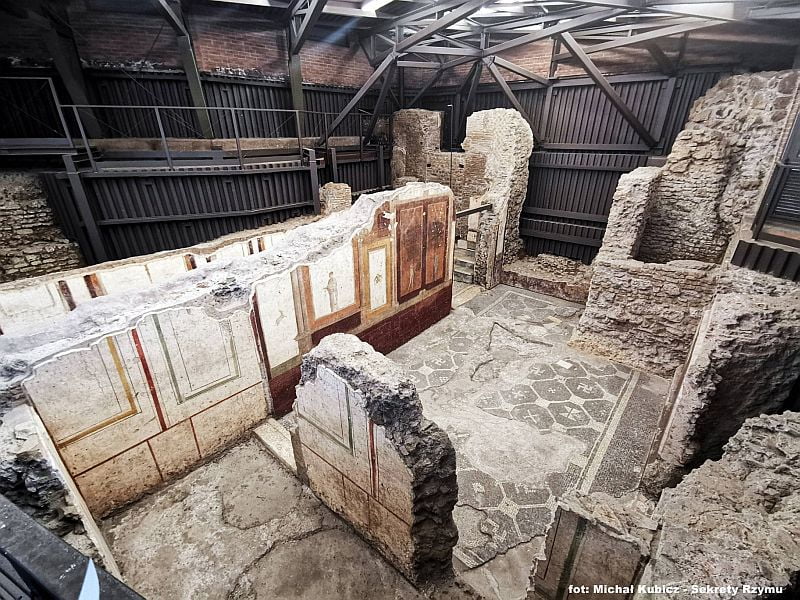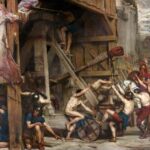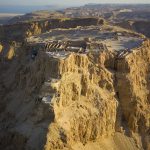In February 2020, it is a great pleasure to enter one of the closed facilities that are not open to tourists on a daily basis. What are we talking about? About the domus belonging to a certain Aufidia Valentilla.
I don’t know much about Aufidia herself, but a fragment of her house in the north-eastern outskirts of Rome is in perfect condition. The connection of the ruins with Aufidia is confirmed by stamps on lead pipes. Unfortunately, we do not know the exact date when the house was built. The vast majority of the frescoes on its walls come from the end of the 2nd or the beginning of the 3rd century CE. Similarly, the mosaics correspond to the style that was fashionable during the Severus dynasty. But it is almost certain that part of the house was built even earlier.
Only a small piece of the house has survived: four rooms and a corridor. Archaeological work carried out in the 1950s confirmed that the house was much larger in the past and was not limited to the rooms available today.
The fate of the house is related to the imperial Sessorium residence, which I wrote about a few weeks ago. The rich aristocratic residence was incorporated into the complex of apartments of state dignitaries living next to the imperial palace. The expansion of the Aurelian walls during the reign of Honorius in the 5th century marked the end of the building. It was demolished to clear the space next to the walls for defensive purposes. The lower parts of the walls were filled in, which made it possible to save for posterity the wonderful frescoes that we can still admire today.
Currently, the ruins are protected by a small pavilion at the back of the Cabina di distribuzione idrica Acea – on Via Eleniana, near the Basilica of Santa Croce in Gerusalemme.
- Frescoes of Aufidia Valentilla’s house
- Remains of Aufidia Valentilla’s house
- Wall of Aufidia Valentilla’s house










